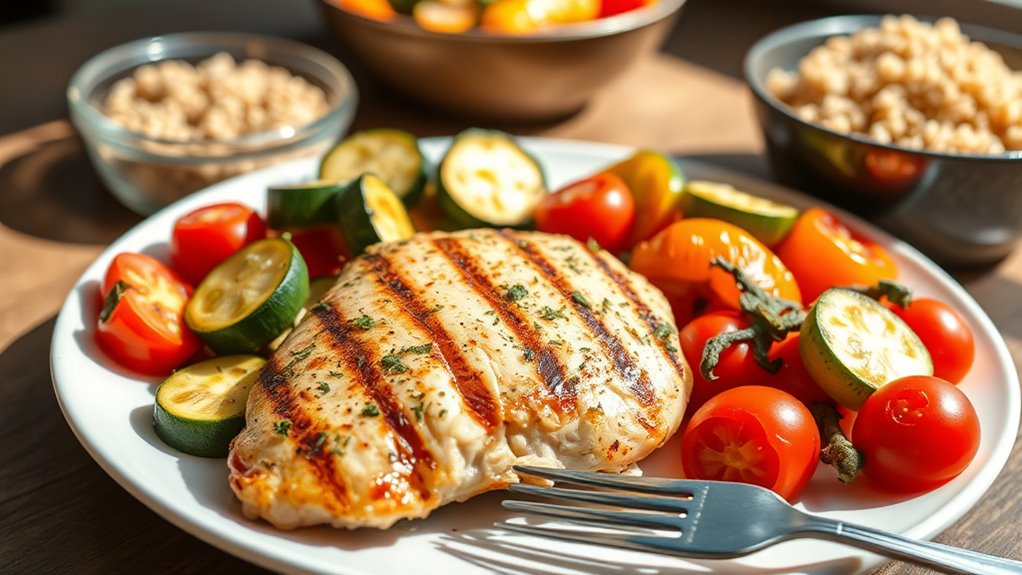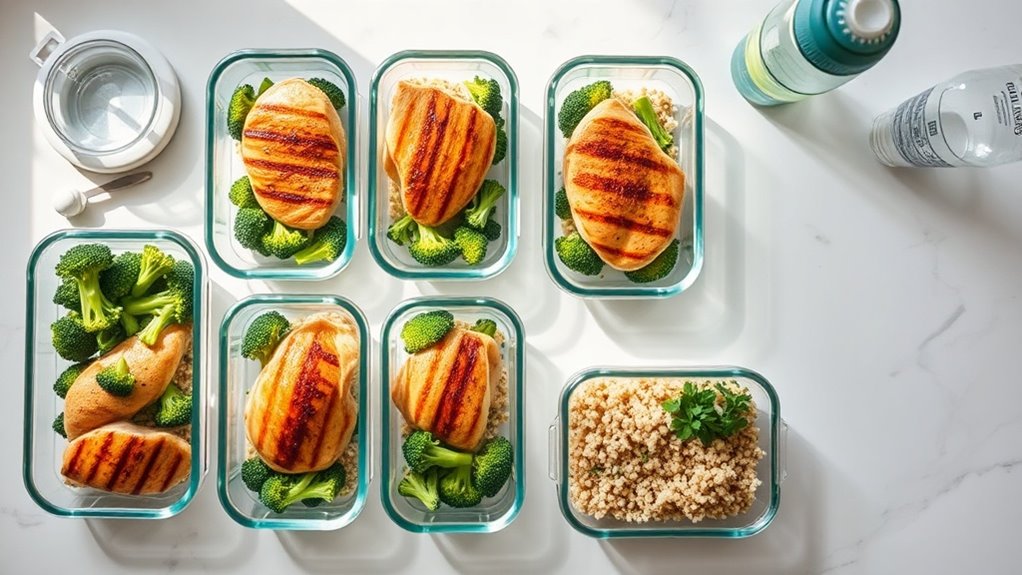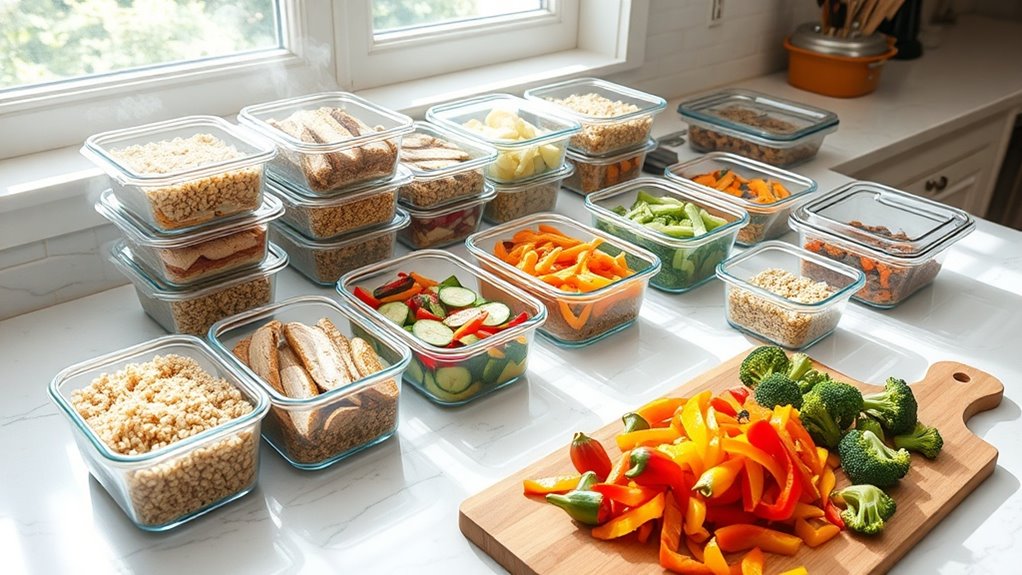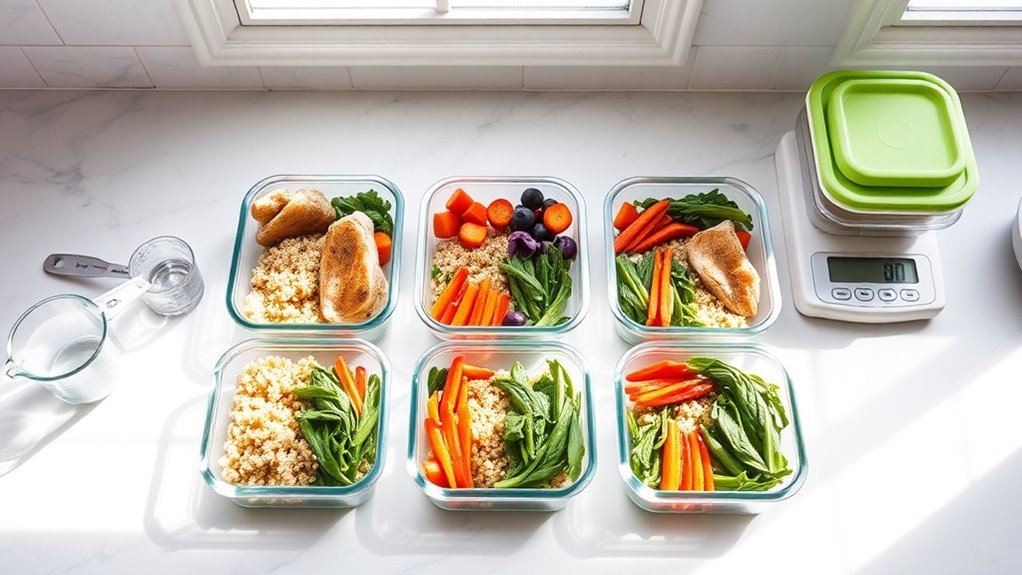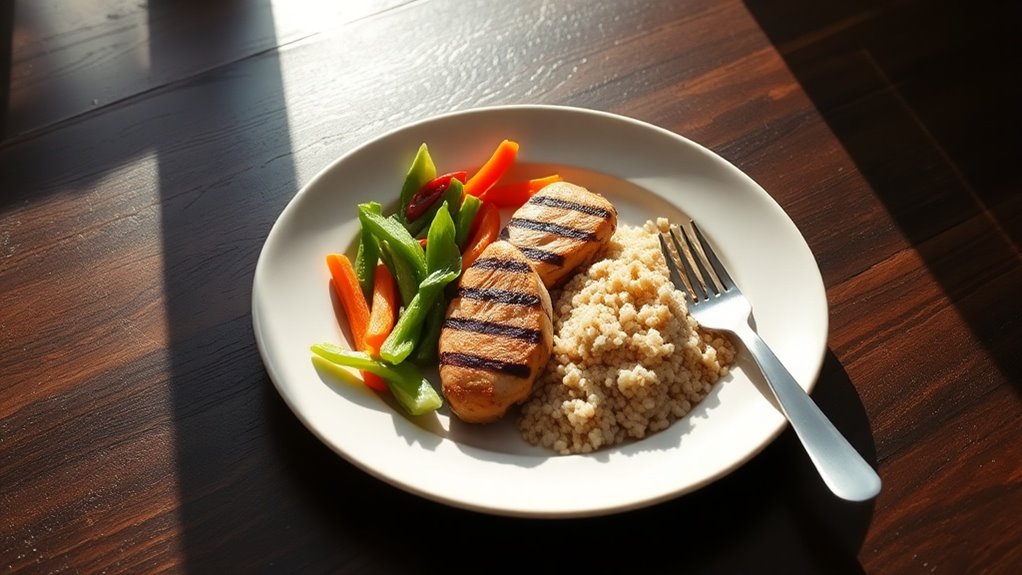My No-Fail Meal Formula That Keeps Me on Track
Imagine you’ve just finished a satisfying meal of grilled chicken, quinoa, and steamed broccoli. This balanced combination of protein, healthy fats, and complex carbs not only fuels your body but keeps cravings at bay. To maintain this balance, you’ll want a solid formula that incorporates these elements consistently. So, how do you create a no-fail meal plan that fits seamlessly into your lifestyle? Let’s explore the essentials together.
Understanding the Basics of Balanced Nutrition
When it comes to balanced nutrition, understanding the core components is essential for maintaining a healthy lifestyle.
An easy meal formula can help you achieve this balance. Aim for a mix of protein, healthy fats, and complex carbohydrates in each meal.
This not only fuels your body but also keeps you satisfied longer, making it simpler to stay on track with your nutrition goals. Additionally, meal planning is an effective strategy that can aid in making healthier food choices and help you stick to your meal formula.
Key Components of My Meal Formula
A solid meal formula revolves around three key components: protein, healthy fats, and complex carbohydrates.
Protein supports muscle repair and keeps you full, while healthy fats provide essential nutrients and energy.
Complex carbohydrates offer sustained energy and fiber, which aids digestion. Drinking water before meals can enhance this formula by promoting a sense of fullness and reducing calorie intake.
Easy Recipe Ideas to Get You Started
Although meal preparation might seem daunting, there are plenty of easy recipes that can help you incorporate the key components of your meal formula.
Try grilling chicken with quinoa and steamed broccoli, or toss together a salad with mixed greens, chickpeas, and a simple olive oil dressing.
These recipes are quick, nutritious, and keep you aligned with your goals while being delicious. Adding lean proteins to your meals not only boosts metabolism but also helps to repair muscles, making your meal prep even more effective for weight loss.
Tips for Meal Prepping Like a Pro
To meal prep like a pro, start by planning your weekly menus; this gives structure to your shopping list and saves you time. Batch cooking essentials, such as grains, proteins, and vegetables, can also streamline your weeknight meals. These strategies help you stay organized and reduce the stress of last-minute cooking. Incorporating lean proteins into your meals will not only enhance your nutrition but also keep you feeling full longer.
Plan Weekly Menus
When you prioritize planning weekly menus, you set yourself up for success in meal prepping.
Start by choosing a mix of proteins, veggies, and grains, ensuring variety. Keep seasonal ingredients in mind for freshness and flavor.
Create a shopping list based on your menu to minimize waste. This structured approach helps you stay organized, saves time, and reduces the temptation to choose unhealthy options.
Batch Cook Essentials
Once you’ve got your weekly menus planned, the next step is to batch cook your essentials.
Focus on versatile ingredients like grains, proteins, and veggies. Cook larger quantities, then portion them into containers for easy access throughout the week.
Store them in the fridge or freezer, ensuring you label everything for quick identification.
This strategy saves time and keeps you on track with your meal goals.
Staying Flexible With Your Meal Choices
Staying flexible with your meal choices allows you to adapt to what’s fresh and available, saving both time and money. Embracing seasonal ingredients not only enhances flavor but also supports local farmers. Incorporating whole grains into your meals can further elevate your dishes while contributing to better health benefits.
Embrace Seasonal Ingredients
Embracing seasonal ingredients can transform your meals and keep your culinary routine exciting.
By focusing on what’s in season, you not only enhance flavor but also support sustainable farming.
Here are three benefits of using seasonal produce:
-
Freshness: Seasonal ingredients are often harvested at peak ripeness, maximizing taste and nutrition.
-
Variety: Exploring different seasons encourages culinary creativity.
-
Cost-effectiveness: Seasonal items typically cost less due to higher availability.
Incorporate Leftovers Creatively
While it might be tempting to toss leftovers into the fridge and forget about them, incorporating these meals creatively can’t only save time but also reduce food waste.
For instance, turn roasted vegetables into a hearty soup or mix grains with proteins for a quick salad.
This approach not only keeps your meals exciting but also ensures you maximize resources and minimize waste effectively.
Swap Ingredients Conveniently
Getting creative with leftovers is a great starting point, but flexibility in your ingredient choices can further enhance your meal planning.
Consider these easy swaps to keep meals exciting and nutritious:
- Substitute quinoa for rice for added protein.
- Use Greek yogurt instead of sour cream for healthier fats.
- Swap turkey for beef to reduce calories while maintaining flavor.
These simple changes can tailor meals to your preferences and needs.
Tracking Progress and Making Adjustments
Tracking your progress and making necessary adjustments is crucial for achieving your meal goals.
Regularly evaluate your food choices and portion sizes. Keep a food diary or use apps to identify patterns. If you notice a plateau or struggle with cravings, tweak your meal formula by incorporating more variety or adjusting your macronutrient ratios. Tracking food intake is essential for understanding eating habits and fostering accountability.

